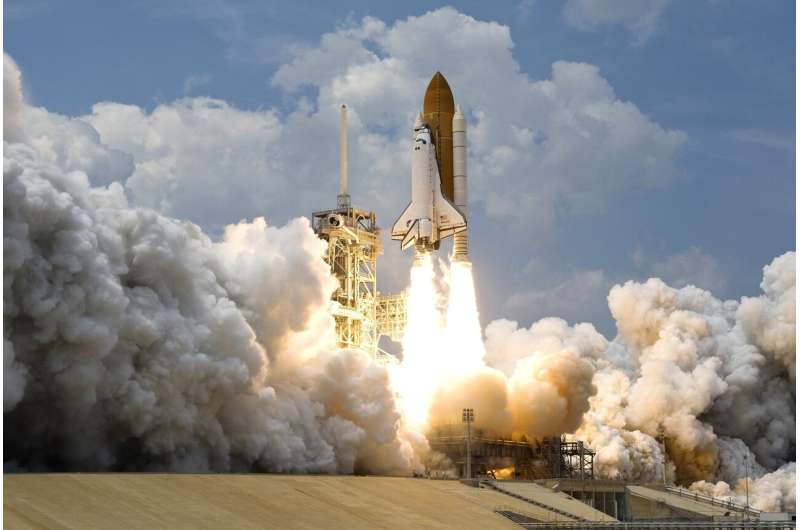
"We are not entirely sure what causes these issues with vision, but we suspect it has to do with a shift in cerebrospinal fluid in the optic nerve sheath. On Earth, gravity pushes that fluid down and it drains out, but in space, it floats up and presses against the optic nerve and retina."
With the help of portable, handheld ultrasound machines, Lyon and his team hope to not only figure out the mechanism behind the changes, but also be able to predict which astronauts will be most likely to experience them.
MCG patented the concept of using portable ultrasound to rapidly visualize damage from pressure and fluid changes in the optic nerve sheath, the layers of protective membranes around the nerve. Lyon is investigating how this part of the brain is affected by elevated cranial pressure and mild traumatic brain injuries. When the brain is injured, like many other organs, it swells and fills with fluid.
Researchers worked with URSUS Medical Designs LLC, a Pennsylvania-based biotech company with expertise in ultrasound, to build a 3D ultrasound machine that could help. A one-year grant enabled the project to build a device that added another dimension to 2D transducers.
Lyon and the MCG research team are now using those ultrasound machines to screen astronauts and determine who among them may already have these incompetent or damaged optic nerve sheaths. They suspect that those are the ones who will be more susceptible to the vision changes associated with SANS.
"We discovered that when the cerebral spinal pressure goes up with mild traumatic brain injuries (TBIs), there is resulting damage to the sheath that is likely lifelong," he explained.
"We think that when astronauts who have experienced concussions or mild TBIs go into space and experience the low-gravity fluid shifts, the sheath dilates from the increase in volume. It is like a tire—a normal tire remains its normal shape as it is filled with air, and the shape doesn't change.
"When it's damaged, like bulges on the side of a tire, the fluid fills the bulges up and the sheath expands. This can cause pressure on the nerve and retina. A damaged sheath is less of a problem on Earth, but in space, the excess fluid has nowhere to go."
The researchers don't yet know if the vision changes are caused by the sheer volume of fluid, by the associated pressure, or both. They are training Polaris Dawn crewmembers to use these ultrasound machines to measure both fluid and pressure in real time during spaceflight.
"If it's just volume, we suspect the cerebrospinal fluid goes up, fills this floppy bag and gets stuck. It's almost like not flushing your toilets. You're creating this toxic environment, because the cerebral spinal fluid (CSF) is what carries toxins away from your eyes and nerves, and instead the toxins sit against the optic nerve, killing it," Lyon said.
"But it could be that combined with the increased pressure that comes with increased CSF, which would be like getting intermittent hypertension in your eye."
Next steps could include working to develop and fine tune countermeasures that would decrease fluid volumes in the head during spaceflight. For example, the U.S. space program and their international space partners use a vacuum-pant device, called lower-body negative pressure, that pulls blood and other fluids down in the body.
This experiment will be part of an extensive suite of science and research performed throughout the mission. Polaris Dawn will collaborate with 23 institutions, including MCG, on the selected experiments.
Other participating institutions include the Translational Research Institute for Space Health (TRISH); University of Texas, Houston; University of Colorado, Boulder; Baylor College of Medicine; Pacific Northwest National Laboratory; and the U.S. Air Force Academy.
Provided by Medical College of Georgia at Augusta University



